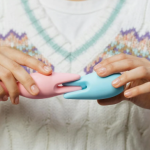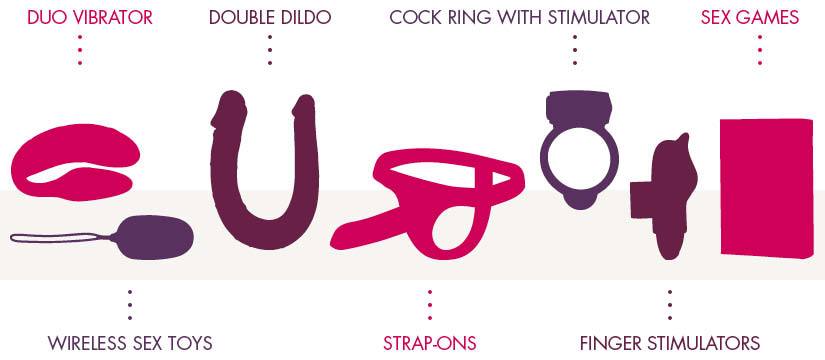The how to hide sex toys question is really two questions: how do you keep your toys private, and how do you store them so they stay clean, charged, and ready? The best setup is invisible to guests yet obvious to you. It protects your gear, respects shared spaces, and makes grab-and-go easy when the mood strikes. Below is a friendly, thorough guide—no brand hype, just practical solutions for different homes, bodies, and budgets.
Start with a privacy map
Before you buy boxes or build secret compartments, take a quiet tour of your space. Who comes and goes? Roommates, kids, cleaners, curious pets, in-laws? Which drawers do people borrow from? Where do you naturally reach when you want something fast? Your privacy map tells you two things: which zones must stay “public-safe,” and which can become your private “toy triangle”—a hidden, easy-access area with storage, cleaning, and charging nearby.
A simple rule helps: if others use it weekly, it’s not a great hiding place. If only you touch it, it’s a contender.
Clean first, then hide
Hiding a dirty toy just creates a future “oh no.” Make this your ritual: rinse with warm water, use a mild unscented cleanser, rinse again, pat dry, and let the toy air-dry for a minute before putting it away. If a toy isn’t waterproof, wipe with a damp cloth and keep ports dry. Separate silicone toys so finishes don’t rub, and store lubes upright to prevent leaks.
Clean, dry, and separate is the difference between a discreet stash and a sticky mess that betrays itself.
The invisibility hierarchy: from “looks like décor” to “no one will ever find it”
Hidden doesn’t have to mean locked in a safe (though that’s an option). Think in layers.
In plain sight, disguised as normal stuff
Neutral pouches that look like cosmetic bags, pencil cases, or glasses sleeves. A folded scarf around a slim vibe on a closet shelf. A small “tech” pouch with cable loops, where a bullet looks like a smart tracker. A velvet pouch among hair tools. These work best for small items and quick access.
Inside decoy containers
Old board-game boxes, camera lens cases, empty headphone boxes, sewing kits, first-aid tins, or a shoebox labeled “winter scarves.” People register the label and move on. Add a pouch inside to keep toys lint-free.
False bottoms and hidden panels
Many dressers and nightstands have unused vertical space under drawers. A thin plywood sheet with magnets can create a false bottom. The front looks like socks; the compartment beneath holds your pouch. DIY carefully; you want smooth edges and no splinters near silicone.
Lockable everyday objects
Locking file boxes, document safes, medicine lockboxes, or a small bedside safe. Choose a design that looks boring. Boring is invisible. If you pick a lock, prefer a combo you can remember even when sleepy.
Elsewhere storage
If you truly need distance—say, you co-parent and kids share rooms—consider a small locking case in a closet you alone use, high up and out of reach, with a decoy bag in front.
The more people traffic a space, the higher you move on the hierarchy.
The “grab kit” concept for moments that count
A hidden toy you can’t reach smoothly might as well be in the attic. Build a grab kit: one discreet pouch with your favorite toy, a travel-size water-based lube, a soft cloth, and a spare charging cable. The pouch should be opaque, zip cleanly, and slide easily into your private drawer. After use, everything goes back in, cleaned and dry. One bag, zero rummaging.
If power outlets are far from your hiding spot, add a short, dedicated charging cable to the kit so the main cable never goes missing.
Charging without broadcasting
Cables give you away. Solve three things: where to charge, how to hide, and how to remember.
- Use a small two-port charger behind a plant or in a cable management box.
- Charge while you shower or run errands; finish before overnight so no LED glows at 2 a.m.
- If your toy has a bright indicator light, cover it with a tiny square of painter’s tape during charging.
- Label your calendar with a neutral phrase like “cycle tech charge” to top up monthly, then stash everything again.
Avoid charging under pillows or in closed drawers without airflow. Heat shortens battery life and can be unsafe.
Materials, pouches, and what to avoid
Soft, lint-free pouches protect silicone and make your stash modular. Microfiber, satin, or cotton are good. Avoid vinyl that smells plasticky or sheds dye. If you store more than one toy per pouch, use a soft divider so surfaces don’t stick.
Keep lubes and oils separate from toys; leaks migrate. Place bottles in a small zip bag or hard pencil case, standing upright, with a tiny microfiber cloth for cleanups.
Odor management without heavy fragrance
Clean toys won’t smell, but closets sometimes do. Slip a small unscented charcoal sachet near your box to absorb humidity and odors. Skip strong perfumed sachets; fragrance on silicone can irritate delicate skin later. If you want a hint of nice, tuck a single dryer sheet near the storage box, not inside the toy pouch.
Hiding toys in tiny apartments
When square footage is scarce, you hide in routines, not just places.
- A cosmetic bag lives in your tote; the bag returns to a specific bookshelf behind novels.
- A narrow locking document box slides vertically next to a stack of cookbooks.
- A fabric storage cube on a shelf holds a folded sweater on top and your pouch below.
- A bed with drawers becomes your ally; designate one corner for your kit, inside a plain shoe box labeled “tax receipts.”
Discreet is a pattern: same spot, same motions, every time.
Roommates, guests, and kids
For roommates, assume curiosity is accidental. People grab the nearest scissors, phone charger, or aspirin. Don’t hide your toys near household tools. For kids, height plus lock beats clever. Choose a simple combination lock; kids notice novelty but bounce off boredom.
If cleaners visit, pick a storage spot that’s clearly not to be touched, like a file box inside your closet. A polite sign on the closet shelf that reads “Private documents—no need to tidy” is boring enough to prevent rummaging.
Travel and TSA
Travel adds a layer: noise and shape. Slim toys that look like facial massagers draw less attention. Use a clear toiletry bag inside your carry-on so security sees a clean, organized kit. If a bag check happens, staff have seen everything; they’ll move on faster if items are clean and cased. Turn toys off and engage any travel lock; pack chargers in a separate pouch to avoid a cable tumble that invites a full unpack.
If discretion with companions matters, put your kit inside a “headphones and cables” pouch that truly contains headphones and cables… and your toy pouch behind a fabric divider.
Couples and co-living: hiding from guests, not each other
When you live with a partner, hiding often means hiding from visitors. Build a shared “toy drawer” with a thin insert tray on top for mundane items—sleep masks, nail clippers, a paperback. Your pouches sit beneath. Before guests arrive, slide the tray forward; the mundane is all anyone sees. After guests leave, slide the tray back and carry on.
If you have kids at home, add a lock. If not, a friction-fit childproof latch inside the drawer is enough to stop casual opens.
A simple post-play reset
The best hiding habit is a reset that takes under five minutes.
- Rinse or wipe each toy, pat dry, air-dry for sixty seconds.
- Check that ports are dry, caps closed.
- Put lube upright in its zip bag.
- Drop a tiny note in your calendar: “charge kit Fri.”
- Slide the pouch into its home, close the decoy box or drawer, and you’re done.
Repeat the same sequence every time so you never leave evidence out.
Special cases: suction toys, plugs, and heavy toys
Suction devices often include parts that need extra drying; leave the head uncovered for a minute before pouching. Plugs and stainless or glass toys are weighty; wrap them in a soft cloth and place them in a hard-sided case inside your decoy box so they don’t clunk when moved. If a toy uses lube channels or removable sleeves, make sure those pieces are bone-dry before storage to prevent odors.
Safety notes you shouldn’t skip
Don’t store toys plugged in. Don’t let oils soak into porous materials or fabrics you wear later. Keep magnets away from medical devices. If you share toys, use barriers or sterilize according to material guidance. Replace anything that smells off, feels tacky, or shows damage.
Think of storage as PPE for pleasure: protective, not fussy.
Hiding while co-parenting or navigating healthcare
If you have medical caregivers or co-parents who enter your space, choose a lockable case that looks like a standard file box and store it with actual office supplies. Keep the key on your keyring, not inside the room. Put your kit in a pouch that looks like a travel mouse and cables set so even if someone glances in, they see “work bag.”
If you’re recovering from a condition and timing your return to intimacy, blend discretion with health: store your kit where you won’t be tempted before you’re ready, and keep a simple health note handy. For example, after treating a yeast infection, it’s wise to wait until the full course is done and all symptoms are gone before resuming sex; for a practical, plain-English refresher on timing and comfort, see this gentle guide: how long to wait for sex after yeast infection treatment. (Internal link included once.)
Digital discretion for app-connected toys
If your toys use apps, hide digitally too. Rename devices to bland titles like “BT Remote 2.” Turn off Bluetooth when not in use. Mute app notifications. Use app locks or Face ID so a curious friend doesn’t open a “remote” tile and start a live demo at brunch. Keep screenshots and chat logs in a hidden or locked album.
Budget-friendly hideouts you can build today
- A shoe box with a folded sweater on top and your pouch beneath the fold.
- A cereal container inside a pantry bin labeled “baking supplies.”
- A zippered pillow cover with a stiff insert, pouch taped to the insert’s back.
- A fake “router cable” pouch with actual cables in front and your kit behind a fabric divider.
Spend more on body-safe toys and less on storage; clever beats expensive.
When you need locked-down security
If discovery would create serious problems, treat storage like document security. Pick a fire-resistant document safe, add desiccant to control humidity, and store toys in individual pouches. Keep the safe somewhere boring—linen closet bottom shelf behind towels. Use a passcode you won’t forget under stress. Test the lock before you trust it.
Making your stash future-proof
As your collection grows, choose modular storage. A shallow drawer organizer with slots for pouches, a small cable box for chargers, a separate upright container for lubes. Label discreetly with icons or color dots so you can pick by feel in the dark. Once a quarter, do a quick audit: clean, charge, discard expired samples, and refresh desiccants.
Future-proofing is just routine, not a project.
A discreet 10-minute setup you can do tonight
- Pick one boring container in a low-traffic spot.
- Add a lint-free pouch for each toy.
- Put lube in its own zip bag, upright.
- Slide a microfiber cloth into the container.
- Tuck a charging cable in a separate small pouch labeled “cables.”
- Hide the container behind everyday items.
- Make a repeating calendar note: “reset & charge” once a month.
You’ve just built a system that hides itself.
Troubleshooting common pitfalls
You forget where you hid things.
Always choose spots on your natural path: bedside, closet shelf you touch daily, or the same tote you carry to work.
You worry about noise while charging.
Charge during daytime with ambient noise. Cover LEDs. Use cable boxes to keep things tidy and silent.
You’re scared of accidental discovery.
Upgrade to a lockable box and add a decoy layer: a tray with mundane items on top so a quick glance ends the search.
You hate the idea of DIY or complicated systems.
Use a cosmetic pouch in a boring shoe box labeled “scarves.” That’s enough.
A quick checklist for perfect discretion
- Clean and dry before storage.
- Separate toys and lubes.
- Choose a boring container and a boring spot.
- Build a grab kit pouch for fast access.
- Charge smart: hidden, ventilated, daytime.
- Lock if discovery would harm your privacy.
- Keep a monthly “reset & charge” reminder.
- Practice the same path every time.
Consistency is your camouflage.
FAQ: how to hide sex toys
What’s the single best hiding place?
The one that’s boring, out of common reach, and on your natural path—often a plain box in your closet behind everyday items, or a locked bedside drawer with a decoy tray on top.
Should I lock everything?
Lock if discovery would cause real trouble (kids, strict households, sensitive jobs). If not, a disguised container plus consistent routine is often enough.
How do I keep toys from smelling like a closet?
Clean thoroughly, let them air-dry, store in lint-free pouches, and place a small unscented charcoal sachet near the box (not inside the pouch).
Can I store toys together?
Yes, if each has its own pouch. Silicone finishes can react if pressed together long-term; dividers prevent stickiness.
Where should I keep lube?
Upright in a sealed zip bag or hard case, separate from toys. This prevents leaks from coating your gear.
How do I hide toys during travel?
Use a neutral “cables and headphones” pouch with your toy pouch behind a fabric divider. Engage travel locks on devices and pack chargers separately.
What about app-connected toys and privacy?
Rename Bluetooth devices to boring titles, mute app notifications, and use screen locks. Turn Bluetooth off when not in use.
Is under the mattress a good idea?
Usually no. People make beds, vacuum, or move mattresses. Choose a spot that never needs third-party handling.
What if cleaners come weekly?
Pick a lockable box in your personal closet. Label it “documents.” Cleaners are less likely to move labeled containers that imply paperwork.
Any quick way to be ready after I hide them?
Keep a single grab kit pouch with your favorite toy, mini lube, cloth, and cable. Clean and reset after every use so it’s ready next time.
How do I prevent LED or charging lights from giving me away?
Charge during the day behind a plant or in a cable box. Cover tiny LEDs with a bit of painter’s tape while charging.
I’m terrible at DIY. Can I still make a false bottom?
Skip it. Use a decoy tray in a drawer: everyday items on top, pouches beneath. It’s simpler and just as discreet.
Final thoughts
Learning how to hide sex toys is really about designing a small, repeatable ritual: clean, pouch, stash, charge smart, and reset. Choose boring spots over clever ones. Let routine do the hiding so you don’t rely on last-minute panic. Keep your kit modular and your surfaces tidy. When your system is simple enough to follow on the sleepiest night, your privacy holds—and your toys stay clean, charged, and ready whenever you are.



![Most Powerful Bullet & Mini Vibrators [Tested in 2025]](https://couplepleasure.com/wp-content/uploads/2025/10/image-11-2.jpeg)
